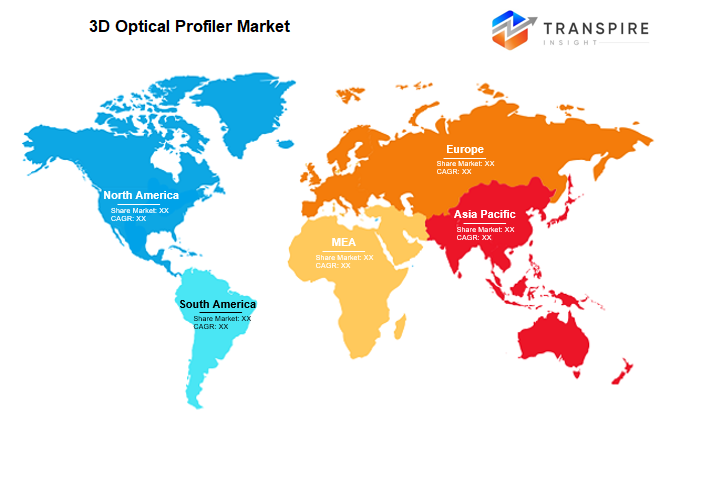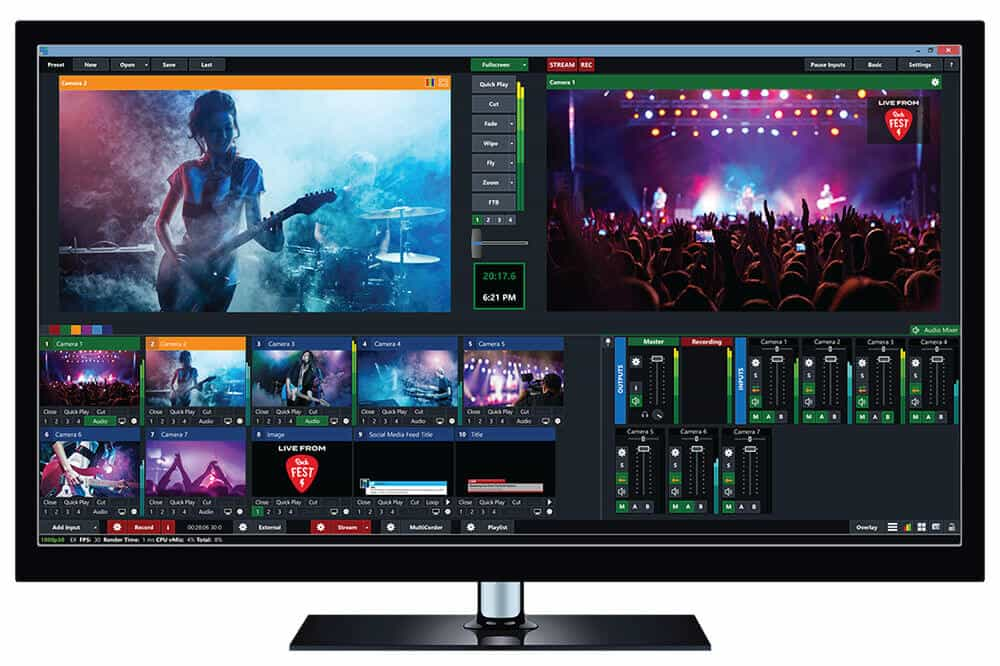Global 3D Optical Profiler market is estimated to reach $230.4 Million by 2031; growing at a CAGR of 5.9% from 2024 to 2031.
The Global 3D Optical Profiler Market is a specialized sector within the measurement and inspection technology industry, focused on advanced diagnostic technologies that enable precise surface and dimension analysis. Utilizing non-contact optical methods like interferometry and focus variation, these profilers accurately map and analyze features at micro- and nano-scales on surfaces. Essential across various industries where precision is crucial, from electronics to aerospace, these devices provide high-resolution, accurate three-dimensional data. Beyond basic measurement technologies, the Global 3D Optical Profiler market offers a variety of devices tailored to meet industry needs, from research and development to production monitoring. Equipped with advanced software for data processing, these profilers enable in-depth visualization and analysis of surface characteristics, ensuring compliance with rigorous manufacturing standards as industries adopt miniaturized components and complex geometries. From electronics and automotive to aerospace and healthcare applications, the demand for 3D optical profilers continues to expand, driven by technological advancements, regional dynamics, and the need for precise and reliable measurements in the ever-evolving manufacturing landscape.

GROWTH FACTORS
The Global 3D Optical Profiler market is projected to continue its growth trajectory in the upcoming years driven by several key factors. The surge in demand for precision measurement in critical industries like aerospace, automotive, and electronics, where accurate surface characterization is essential for quality assurance and process enhancement, is a significant growth driver. Furthermore, the increasing adoption of advanced manufacturing technologies, including additive manufacturing, is fueling the need for 3D optical profilers to inspect and analyze intricate surfaces and geometries. Technological advancements in profiler systems, such as improved imaging capabilities, higher resolution, and faster processing speeds, are also propelling market growth by enhancing efficiency and user-friendliness. Despite facing challenges like the high cost of equipment and the need for skilled personnel to handle and interpret data, the market holds promise for expansion, especially in emerging industries like renewable energy and biotechnology. As the industry continues to evolve and innovate, the future of the Global 3D Optical Profiler market looks promising, with a focus on sustainability and innovation driving its growth to new heights.

MARKET SEGMENTATION
By Type
The Global 3D Optical Profiler market is experiencing rapid growth driven by technological advancements and the increasing demand for precise surface measurement solutions across various industries. The market's expansion is attributed to its provision of accurate, non-contact, and reliable measurements, making it essential in manufacturing, quality control, and research applications where precision is crucial. As industries prioritize efficiency and accuracy, the significance of 3D optical profilers continues to rise, indicating promising growth prospects in the future. The market is segmented into Desktop and Portable 3D Optical Profilers, catering to different market requirements. The Desktop segment, valued at 76.1 million USD in 2023, is known for its measurement capabilities and robust performance, suitable for high-precision applications in laboratories and industrial settings. On the other hand, the Portable segment, accounting for 40.8 million USD in 2023, offers portability and flexibility in surface measurement, ideal for fieldwork and decentralized operations. The future of the Global 3D Optical Profiler market hinges on the development of more sophisticated and efficient technologies, driven by the adoption of advanced manufacturing processes and the integration of artificial intelligence and machine learning. This forward-looking approach ensures that the market remains dynamic, evolving to meet industrial needs while fostering innovation for sustained growth and technological advancements.
By Technology
The Global 3D Optical Profiler market is experiencing significant growth driven by technological advancements that are reshaping various industries. This market, which focuses on tools used for precise surface profile measurements, is gaining importance due to the increasing demand for quality control methods that offer accurate and efficient processes. Industries are turning to technologies such as confocal and white light interference for improved production processes and product standards. Confocal technology allows for high-resolution images and precise measurements, particularly beneficial for industries like electronics, automotive, and medical devices. On the other hand, white light interference offers high resolution without damaging delicate surfaces, making it a preferred method for surface feature measurements. The future of the Global 3D Optical Profiler market looks promising, with rising demand for smaller, more intricate products across industries driving the need for advanced profiling tools. Technological innovation, including faster processing speeds and enhanced automation, is also expected to fuel market growth, opening up new applications in aerospace and biotechnology. Moreover, the adoption of Industry 4.0 practices will further boost market growth by enabling real-time monitoring and data analysis for increased accuracy and productivity. As these trends continue to evolve, the Global 3D Optical Profiler market is poised for remarkable growth driven by technological advancements and emerging requirements in various sectors.
By End-Use Industry
The Global 3D Optical Profiler market is poised for significant growth with the advancement of technology and increasing demand across various sectors. These instruments offer high-resolution imaging and non-contact measurement capabilities, making them essential for industries that require accurate measurements and detailed analysis. In 2023, the manufacturing sector led the market with a valuation of 36 million USD, highlighting the importance of precision in production processes and quality control. Research organizations also heavily contribute to the market, with a valuation of 22.9 million USD, as they utilize profilers for advanced research activities in materials science and nanotechnology. The automotive, aerospace, defense, and medical device industries are increasingly relying on 3D optical profilers for precision manufacturing and quality control. As industries continue to prioritize efficiency and precision, the Global 3D Optical Profiler market is expected to witness steady growth driven by emerging technologies and increased investments in automation and research.
REGIONAL ANALYSIS
The Global 3D Optical Profiler Market is experiencing significant advancements and offering promising opportunities across various regions. With rapid technological advancement, this market has the potential to grow and adapt to the evolving needs of different industries. Geographically segmented into North America, Europe, Asia-Pacific, South America, and the Middle East & Africa, each region witnesses distinct growth driven by regional demands and technological capabilities. In North America, the United States, Canada, and Mexico lead the market with strong industrial sectors and high investments in research and development, especially in manufacturing and material analysis. Europe, with countries like the UK, Germany, and France, is a major contributor due to high manufacturing production and quality requirements. Meanwhile, the Asia-Pacific region, including China, India, and Japan, is rapidly adopting 3D optical profilers in the fast-emerging electronics manufacturing and precision engineering sectors. South America and the Middle East & Africa are also recognizing the value of this technology, driven by industrial development and infrastructural investments. The transformative growth of the Global 3D Optical Profiler Market is evident, as industries worldwide increasingly emphasize precision and innovation to meet future demands and drive progress in all regions.

KEY INDUSTRY PLAYERS
The Global 3D Optical Profiler market is poised for substantial growth in the coming years, driven by technological advancements and rising demand across multiple industries. Serving as a non-contact measurement tool for precise surface analysis, the 3D optical profiler plays a crucial role in sectors such as electronics, automotive, aerospace, and healthcare, where accuracy is paramount. Its adaptability to evolving industrial needs, coupled with the ongoing trend of industrialization and automation, positions it as an essential component of smart manufacturing processes. With the integration of machine learning and artificial intelligence, these devices are set to become even more sophisticated and user-friendly, providing real-time data for quality assurance and enhancing production efficiency. Leading players in this market, including Zygo Corporation, Sensofar Group, and KLA Corporation, are continuously innovating to improve the speed, accuracy, and usability of their products. As the market shifts towards sustainability and cost competitiveness, companies like Bruker Corporation and AMETEK, Inc. are introducing automated inspection systems and portable profiling devices to meet industry demands. Furthermore, niche players like Cyber Technologies GmbH and Nanovea are focusing on specialized applications such as nanotechnology to capture specific market segments. Collaboration between technology providers and manufacturers, along with customized solutions from companies like Keyence Corporation and Mahr GmbH, are expected to drive innovation and revolutionize industrial processes in the Global 3D Optical Profiler market in the years ahead.
REPORT SCOPE AND SEGMENTATION
|
Attributes |
Details |
|
Market Size By 2031 |
USD 230.4 Million |
|
Growth Rate |
CAGR of 5.9% |
|
Forecast period |
2024 - 2031 |
|
Report Pages |
250+ |
|
By Type |
|
|
By Technology |
|
|
By End-Use Industry |
|
|
By Region |
|
|
Key Market Players |
|



_page-000112.jpg)
_page-000168.jpg)
_page-000167.jpg)
_page-000166.jpg)
_page-000165.jpg)






 APAC:+91 7666513636
APAC:+91 7666513636





